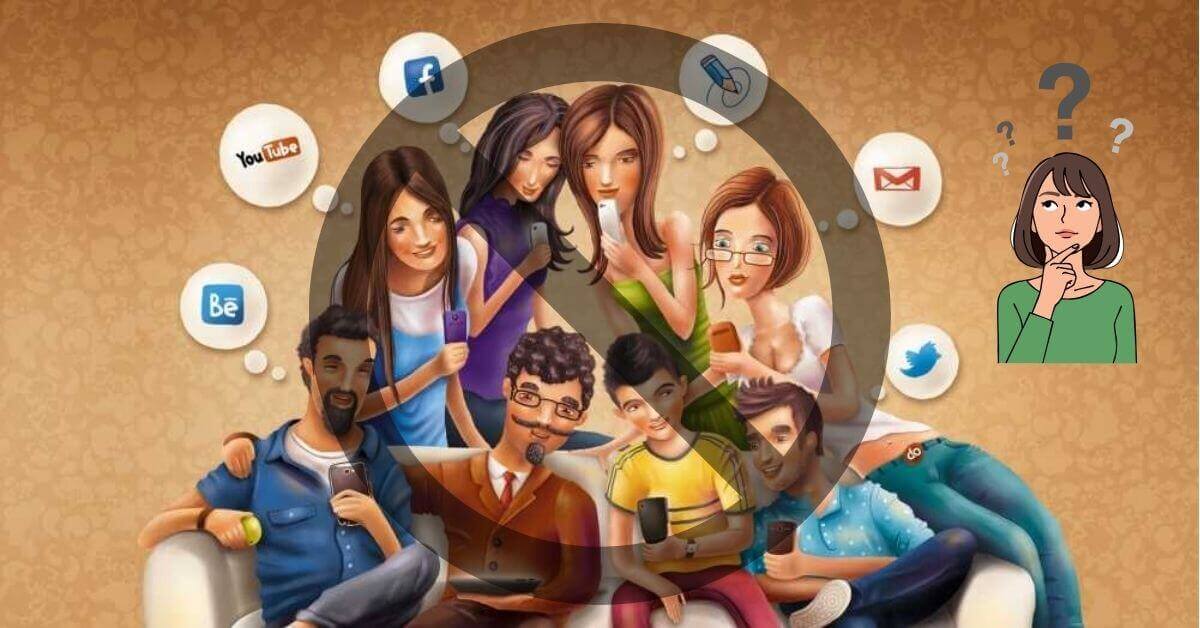In today’s hyper-connected world, our lives revolve around screens. From the moment we wake up to the moment we sleep, digital devices command our attention smartphones, laptops, tablets, and smart TVs. While technology has made life more convenient, it has also led to a growing problem known as digital addiction.
This silent epidemic is affecting millions globally, changing the way we think, behave, and interact with others. Understanding digital addiction its causes, effects, and solutions is essential to regaining control in a world that’s always online.
What Is Digital Addiction?
Digital addiction refers to an excessive and compulsive use of digital devices and platforms, such as smartphones, social media, video games, or the internet, in a way that disrupts daily life.
Like substance addiction, digital addiction stimulates the brain’s reward system by releasing dopamine the “feel-good” hormone. Every time you get a notification, a like, or a message, it gives a small sense of pleasure, encouraging you to keep checking again and again.
This repetitive cycle eventually turns into dependency making it difficult to stay away from digital screens even for a short period.
The Types of Digital Addiction
Digital addiction can manifest in several forms, depending on what aspect of the digital world dominates your time and attention. Below are some of the most common types:
1. Social Media Addiction
Platforms like Instagram, TikTok, Facebook, and X (Twitter) are designed to be addictive.
Endless scrolling, algorithm-based recommendations, and constant notifications keep users engaged for hours.
Social media addiction can lead to:
- Anxiety or depression from comparison and validation seeking.
- Reduced real-life social interactions.
- Lower productivity and focus.
The constant need for likes, comments, and engagement creates a cycle of dependence, where online validation begins to define self-worth.
2. Internet Addiction
Internet addiction is a broader term that covers excessive use of the web for browsing, watching videos, or engaging in online communities.
It includes habits like:
- Binge-watching videos on YouTube or OTT platforms.
- Constantly surfing random websites.
- Obsessive online shopping or reading news feeds.
This can lead to mental fatigue, disrupted sleep patterns, and reduced attention spans.
3. Gaming Addiction
Online gaming has become a major cause of digital addiction, especially among teenagers and young adults.
Multiplayer games like PUBG, Fortnite, and Call of Duty reward persistence with progress and recognition, making it hard to quit.
Consequences often include:
- Poor academic or work performance.
- Social isolation.
- Aggression or irritability when not playing.
4. Smartphone Addiction
The smartphone is at the center of all digital addictions.
From social media to games, chats, and streaming, it serves as a one-stop entertainment hub.
According to studies, the average person checks their phone more than 150 times a day often without realizing it.
This constant checking not only wastes time but also reduces attention span and increases stress levels.
Causes of Digital Addiction
Understanding what drives digital addiction is key to controlling it. Several psychological, social, and environmental factors contribute to it:
1. Instant Gratification
Digital platforms provide immediate rewards likes, views, or messages. The brain starts craving these small bursts of happiness, leading to compulsive use.
2. Fear of Missing Out (FOMO)
Many users check their devices constantly because they fear missing updates, trends, or events. This FOMO keeps them glued to screens even during meals or social gatherings.
3. Social Pressure and Validation
Especially among young people, social media validation plays a big role. The number of followers, likes, or comments often becomes a measure of popularity.
4. Boredom and Escapism
Many turn to digital platforms to escape stress, loneliness, or boredom. Over time, this coping mechanism turns into dependency.
5. Design of Digital Platforms
Tech companies intentionally design apps and websites to maximize engagement. Features like infinite scroll, autoplay, and push notifications are built to keep users hooked.
Top Wellness Trends for 2025: New Year, New You
The Psychological and Physical Effects
Digital addiction doesn’t just affect your time it affects your mental, physical, and emotional health.
1. Mental Health Issues
Excessive screen time can cause:
- Anxiety, depression, and irritability.
- Difficulty focusing or remembering things.
- Emotional instability and stress.
2. Sleep Disorders
Blue light emitted by screens suppresses melatonin the sleep hormone. This leads to insomnia and poor sleep quality.
3. Reduced Productivity
Constant notifications and multitasking lower attention spans and reduce efficiency at work or school.
4. Social Disconnection
Ironically, while digital media connects people virtually, it disconnects them emotionally in real life. Face-to-face interactions are replaced by emojis and text messages.
5. Physical Strain
Eye strain, neck pain (“tech neck”), and carpal tunnel syndrome are common physical consequences of excessive device use.
How to Overcome Digital Addiction
Breaking free from digital addiction doesn’t mean giving up technology entirely it’s about creating balance and using it mindfully.
Here are some practical tips to help regain control:
1. Set Screen Time Limits
Use built-in features on your phone to monitor and restrict daily usage. Set boundaries for social media or gaming apps.
2. Practice Digital Detox
Designate certain hours or days (like “no phone Sundays”) where you stay completely offline. Use that time to engage in outdoor activities, reading, or hobbies.
3. Turn Off Non-Essential Notifications
Notifications are one of the main triggers for checking your phone. Disable unnecessary alerts to reduce distractions.
4. Avoid Screens Before Bed
Stop using digital devices at least one hour before bedtime. This improves sleep quality and mental calmness.
5. Use Technology Mindfully
Ask yourself: “Why am I opening this app?” If it’s out of habit or boredom, redirect your attention elsewhere.
6. Create Real-World Connections
Spend more time with family, friends, and outdoor activities. Real-life experiences create fulfillment that screens cannot replace.
7. Seek Professional Help
In extreme cases, where addiction affects mental health or daily life, therapy or digital wellness programs can help re-establish balance.
The Role of Parents and Educators
For children and teenagers, digital addiction can severely affect growth, concentration, and emotional development.
Parents and teachers can play a vital role by:
- Setting screen time boundaries.
- Encouraging physical activities and hobbies.
- Leading by example limiting their own device use.
- Talking openly about healthy digital habits.
Teaching digital responsibility early can prevent long-term behavioral issues.
Finding a Healthy Digital Balance
Technology itself isn’t the enemy it’s our relationship with it that determines the outcome. When used wisely, it empowers learning, connection, and creativity. But when misused, it drains time, focus, and emotional energy.
The key lies in balance knowing when to disconnect to reconnect with real life.
Digital minimalism, mindfulness, and conscious usage can transform our relationship with technology from one of control to one of empowerment.
Conclusion
Digital addiction is not just a personal issue it’s a social and cultural challenge of our time.
The line between the digital and real world has blurred, but awareness is the first step toward reclaiming control.
By recognizing the signs, setting boundaries, and prioritizing human connections over digital ones, we can build a healthier relationship with technology.
After all, life happens beyond the screen and it’s worth logging off for.







